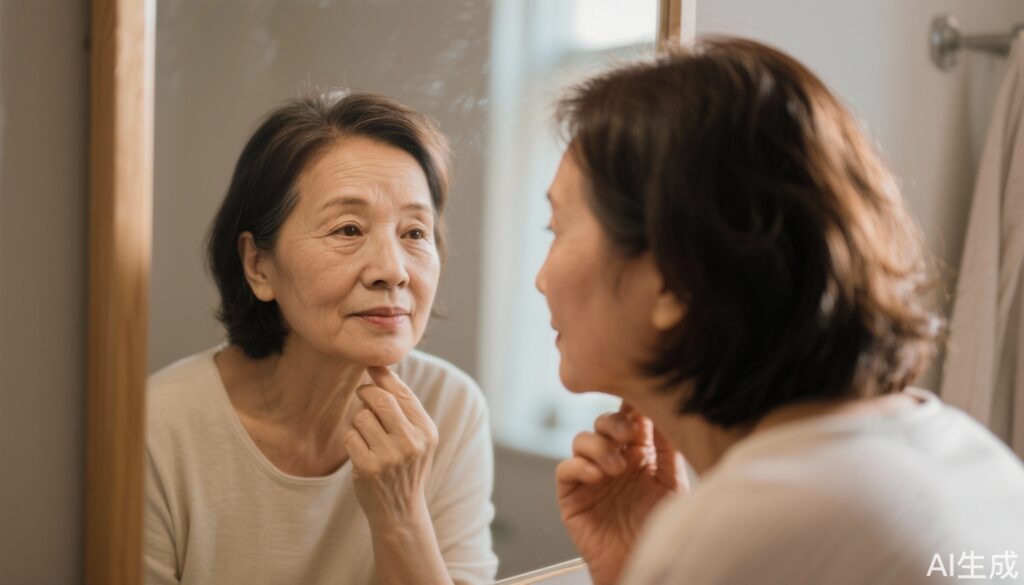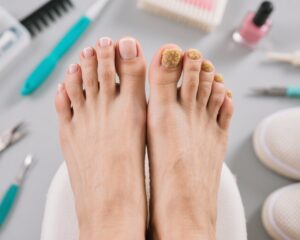Introduction
Aging is a natural and inevitable process experienced by everyone. However, recognizing the early signs of aging can empower individuals to take proactive measures to maintain health and vitality. Common physical indicators—including sagging buttocks, a receding hairline, increased waist circumference, collapsed foot arches, and widening gaps between teeth—often mark the beginning of aging. Understanding these signs, their underlying causes, and ways to mitigate their effects is essential for both the general public and health professionals aiming to promote healthy aging.
Five Physical Signs That Signal Aging Has Begun
1. Sagging Buttocks
With advancing age, the gluteal muscles and surrounding tissues lose tone and elasticity, leading the buttocks to slowly sag and widen. Sedentary lifestyles exacerbate this effect; prolonged sitting promotes fat accumulation and muscle atrophy, particularly if accompanied by high sugar and high-fat diets. This imbalance results in soft tissue appearing bulky and less firm, signaling decreased muscle mass and altered body composition.
2. Receding Hairline
Hair aging presents commonly as graying and hair loss, especially noticeable in the recession of the hairline. Factors such as chronic sleep deprivation, excessive stress, and hormonal imbalances disrupt the endocrine system and accelerate hair loss. Notably, premature hairline recession is increasingly seen among younger adults, reflecting lifestyle and environmental stressors.
3. Increased Waist Circumference
Women often observe an increase in waist size during menopause, but this change is not solely due to slower metabolism from aging. A decline in estrogen levels significantly impacts fat distribution and metabolism. The accumulation of abdominal fat is linked to hormonal shifts and multifactorial influences, heightening the risk for metabolic syndrome and cardiovascular diseases.
4. Collapsed Foot Arches
Aging causes degenerative changes in the foot’s muscles and ligaments. This leads to a loss of elasticity in the arches, making the feet longer and wider. Tendons and ligaments connecting tiny bones become less flexible, which can cause discomfort and improperly fitted shoes if size adjustments are not made. Ignoring this change may lead to chronic foot pain and mobility issues.
5. Widening Gaps Between Teeth
Oral aging is often overlooked but clinically significant. Increasing space between teeth typically indicates gum recession or inflammation around the teeth. Periodontal disease is a common contributor, leading to ligament loss around teeth roots. This widening affects not only aesthetics but oral health, with potential impacts on nutrition and systemic inflammation.
Sleep Habits and Their Role in Slowing Biological Aging
A landmark study published in August 2023 in the journal Sleep Health evaluated 6,052 adult participants with an average age of 50 to investigate the link between sleep patterns and biological age. Researchers collected data on bedtime, wake time, sleep duration, and efficiency, correlating these with biological age determined through blood sample analyses.
The study revealed that participants with inconsistent sleep durations, irregular bedtimes, or substantial differences between weekday and weekend sleep patterns exhibited a notably higher biological age—up to 0.77 years older—compared to those with stable sleep habits. For context, variations in sleep timing and duration corresponded to an accelerated biological aging process equivalent to approximately 9 months.
Key Factors for Quality Sleep
Two primary mechanisms regulate human sleep: the circadian rhythm (biological clock) and sleep homeostasis (sleep pressure balance). In simple terms, good sleep relies on both consistency and adequate duration.
– The recommended sleep duration for adults is 7 to 8 hours per night, with 6 hours considered the minimum healthy threshold and 9 hours as the upper limit.
– Studies demonstrate that less than 6 hours or more than 9 hours of sleep per night increase the risk of adverse cardiovascular outcomes such as myocardial infarction.
Five Practical Ways to Improve Sleep and Delay Aging
1. Adopt a Regular Routine: Wake up at the same time every day, including weekends, to strengthen your biological clock. Aim to sleep before 11 PM.
2. Engage in Physical Activity: Moderate exercise such as brisk walking, jogging, or traditional practices like Ba Duan Jin can improve sleep quality and ease falling asleep. Avoid intense workouts after 5 PM to prevent sleep disruption.
3. Avoid Heavy Meals Before Bed: Eat dinner at 70–80% fullness, and refrain from snacking or drinking large amounts of fluids before sleeping. A rested stomach lowers the risk of acid reflux, nighttime awakenings, and weight gain.
4. Prepare a Sleep-Friendly Environment: Ensure a dark, quiet, and comfortable bedroom by closing windows, drawing curtains, and minimizing noise. Also, reduce blue light exposure from electronic devices 2-3 hours before bedtime to promote melatonin production.
5. Practice Relaxation Techniques: Employ abdominal breathing exercises—slowly inhaling, holding briefly, exhaling gently, and pausing—to calm the nervous system before sleep.
When Sudden Aging Changes Indicate Underlying Health Issues
Sometimes individuals might experience rapid physical aging signs, such as a gaunt appearance, yellowish complexion, blotchy skin, hand swelling upon waking, or puffy eyelids, suggesting an abrupt health change. Such presentations may indicate thyroid dysfunction rather than true biological aging. These conditions are often reversible with appropriate medical intervention rather than lifestyle modification alone.
Case Scenario: Susan’s Journey to Understand Aging and Sleep
Susan, a 52-year-old office worker, noticed her waistline gradually increasing and her hairline receding. She felt more fatigued despite sleeping in on weekends. Concerned about these changes, she consulted her physician, who advised tracking her sleep consistency and adopting healthier sleep habits. Over several months, Susan maintained a regular sleep schedule, limited late meals, began gentle exercises, and created a calm sleep environment. Her energy levels improved, waist circumference stabilized, and hair loss progression slowed. Susan’s story illustrates the connection between lifestyle, sleep, and aging outcomes.
Conclusion
Recognizing early signs of aging—sagging buttocks, receding hairline, increased waist circumference, collapsed foot arches, and widening tooth gaps—offers an opportunity for timely intervention. Research emphasizes that maintaining stable sleep habits is a key practical strategy to slow biological aging. Simple lifestyle changes, including regular sleep schedules, balanced nutrition, physical activity, and a conducive sleep environment, empower individuals to age more gracefully. Moreover, sudden aging-like symptoms warrant medical evaluation to rule out reversible health disorders such as thyroid disease.
By combining awareness of physical changes with evidence-based sleep and lifestyle modifications, both the public and health professionals can better address the challenges of aging and promote long-term health and well-being.
References
1. Jackson CL, et al. Sleep timing variability and biological aging: Findings from the Sleep Health study. Sleep Health. 2023;9(4):263-270.
2. National Sleep Foundation. Sleep Duration Recommendations. https://www.sleepfoundation.org/how-sleep-works/how-much-sleep-do-we-really-need
3. Kourosh R, et al. Hormonal Changes in Menopause and Their Impact on Body Composition. J Endocrinol Metab. 2021;11(4):157-165.
4. Petersen RC, et al. Aging Changes in Musculoskeletal System Affecting Mobility. J Gerontol A Biol Sci Med Sci. 2019;74(6):867-874.
5. Tonetti L, et al. Blue light and sleep quality: A review of the effects. Neuropsychobiology. 2021;80(3):127-134.


